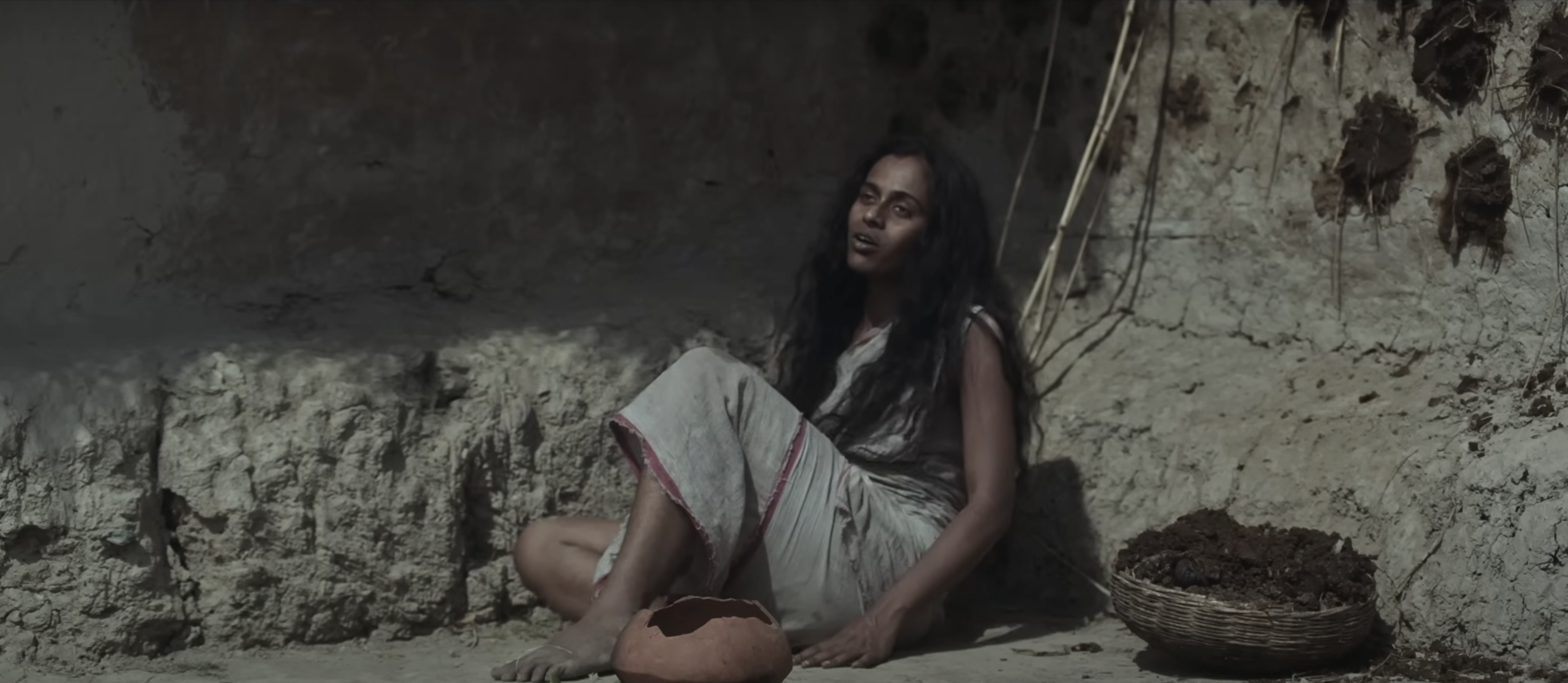Tridev’s “Abhagir Swargo,” the sole Bengali short film to earn a coveted spot on the BAFTA shortlist, emerges as a profound testament to the enduring potency of storytelling. Adapted from Sarat Chandra Chattopadhyay’s poignant short story of the same name, the film delves deep into the poignant struggle of Abhagi (portrayed by Uma Banerjee), an “untouchable” woman yearning for a dignified exit from the unforgiving grasp of India’s caste system in the 1870s.
The narrative unfurls against a backdrop of stark visual contrasts, setting the stage for an emotionally charged exploration. As the camera pans across the solemn rituals of an upper-caste woman’s funeral pyre, a solitary sigh escapes Abhagi’s lips, echoing the profound injustice that permeates her existence. This silent gesture serves as a damning indictment of a societal hierarchy that denies her the most basic right to a respectful passage into the afterlife. The weight of her name, Abhagi, meaning “unfortunate,” foreshadows the bleak fate that awaits her.
“Abhagir Swargo” adeptly captures the brutal intersection of caste and gender, highlighting the dual marginalization experienced by women like Abhagi. Denied not only fundamental human rights but also the comfort of a hopeful afterlife, their struggles epitomize the pervasive cruelty of societal norms. The concept of heaven, depicted as a chariot ride to blissful eternity, remains an elusive dream reserved solely for the privileged upper castes, casting a long shadow over Abhagi’s final days.
Her seemingly mundane wish – to be cremated by her son – assumes monumental significance amidst their ostracized status. A poignant moment unfolds as Abhagi recounts a tale to her son about a celestial chariot ferrying the departed to heaven, a privilege accessible only to those adhering to upper-caste rituals. This sets the stage for the film’s central conflict: the son’s desperate bid to honor his mother’s wish in a world rigged against them.
Navigating the rigid social structure proves an insurmountable challenge. The son’s endeavor to fell a tree planted by his mother is thwarted by a wealthy landowner demanding payment for the wood, laying bare the economic exploitation ingrained in the feudal system. Abhagi’s marginalization is further underscored by a Brahmin priest deriding the son’s aspirations as mere “fantasies,” highlighting the pervasive nature of caste discrimination, even in matters of death.
Unable to afford cremation, the son reluctantly lays his mother to rest by the lake. This departure from Abhagi’s original wish serves as a poignant commentary on the cyclical nature of life and death. It suggests that for the untouchables, returning to nature in death becomes their only solace, starkly contrasting with the promise of heaven tantalizingly dangled before the upper castes.

Tridev’s storytelling prowess hinges on a minimalist approach, with sparse dialogue allowing evocative cinematography to paint a vivid portrait of rural Bengal. Muted tones and stark visuals depict the harsh realities of poverty and social exclusion endured by Abhagi and her son. Close-up shots of Abhagi’s face convey a myriad of emotions, from the quiet desperation of her illness to the fleeting hope mirrored in her son’s eyes. “Abhagir Swargo” resonates with literary works such as Munshi Premchand’s “Kafan” and “Sadgati,” which similarly lay bare the atrocities of the caste system. By drawing these parallels, the film transcends its historical setting, compelling audiences to confront the enduring legacy of caste in contemporary India.
In “Abhagir Swargo,” fire emerges as a potent symbol, signifying both burning and purifying. Yet, for the downtrodden, access to this purifying element is denied, emblematic of the systemic oppression ingrained in the caste system. Denied the dignity of a respectful departure, Abhagi’s journey becomes a fascinating allegory for the struggle against entrenched social hierarchies.
The imagery of fire, traditionally associated with destruction and purification, is significant in “Abhagir Swargo.” While the upper castes perform elaborate funeral pyres to cleanse the departed, the oppressed are denied even this basic ritual, relegated to burial by the lake. This denial of fire as a purifying force underscores the depths of marginalization experienced by Abhagi and her son.
Throughout the film, Abhagi’s yearning for a dignified death serves as a powerful metaphor for the broader struggle against caste-based oppression. Her desire to be cremated by her son symbolizes a quest for agency and autonomy in the face of systemic injustice. Yet, this simple wish proves elusive, thwarted at every turn by the rigid structures of caste hierarchy. Tridev’s masterful storytelling transcends mere narrative, inviting audiences to grapple with the complexities of caste and privilege in contemporary society.
As “Abhagir Swargo” unfolds, it becomes increasingly clear that the film is not just a historical drama but a powerful indictment of the enduring legacy of caste oppression in India. By shining a light on the plight of the marginalized, Tridev compels audiences to reckon with the injustices that continue to shape our world today.
In its essence, “Abhagir Swargo” is a moving exploration of the quest for dignity in the face of oppression. It embodies an enduring hope for a world where death does not further marginalize but remains a universal equalizer. As the film leaves a lasting impact, it prompts reflection on the true meaning of heaven and the ongoing battle for social justice in contemporary society.



![Paterson [2016]: Silent Wonders of Life](https://79468c92.delivery.rocketcdn.me/wp-content/uploads/2017/05/1af9d050-85d0-11e6-b270-edf4b16cae3d_20160929_Paterson_Trailer1-768x432.jpg)




